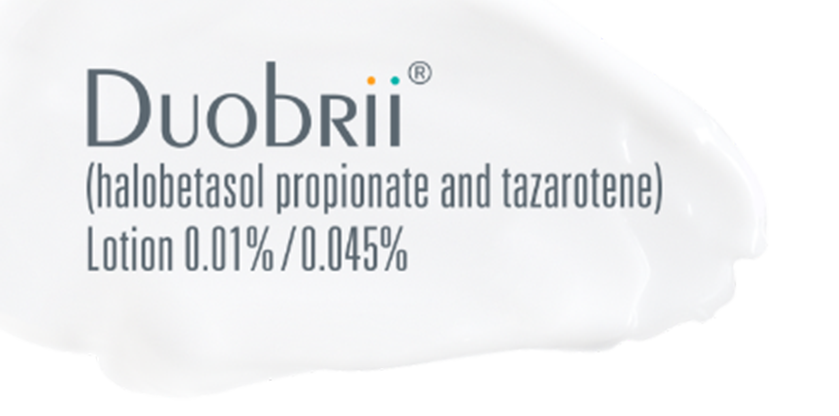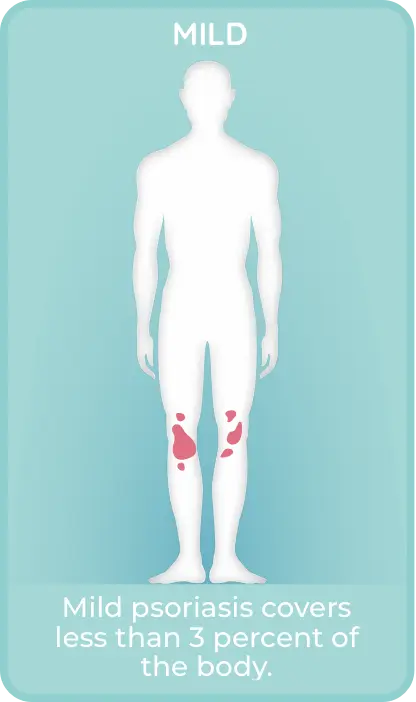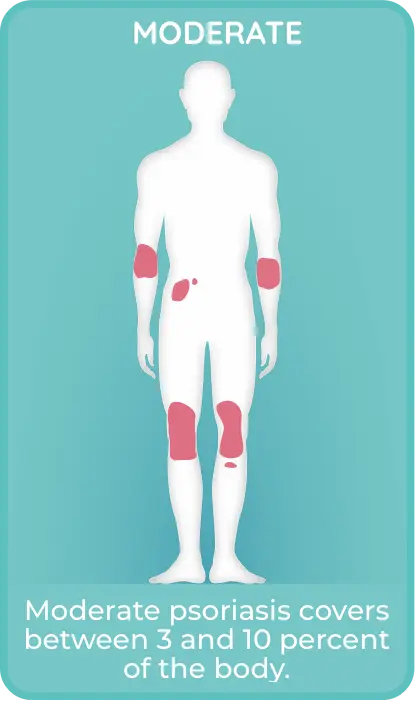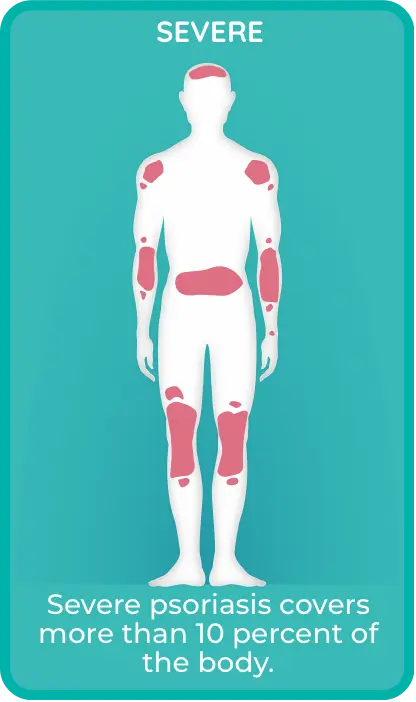You're living with psoriasis,
and you're looking for answers
We’re here to help. Establishing an ongoing partnership with your doctor will always be the best way to help manage your psoriasis and overall health.
What is Psoriasis?
Understanding how psoriasis affects the skin
Psoriasis is a chronic skin condition that causes raised, red or silvery, scaly patches (plaques) to appear on the skin. It is an auto-immune disease in which patients shed their skin too quickly, causing dead skin cells to pile up on the surface. Normal skin cell turnover usually takes about a month, but for patients with psoriasis the turnover can happen in only a few days.
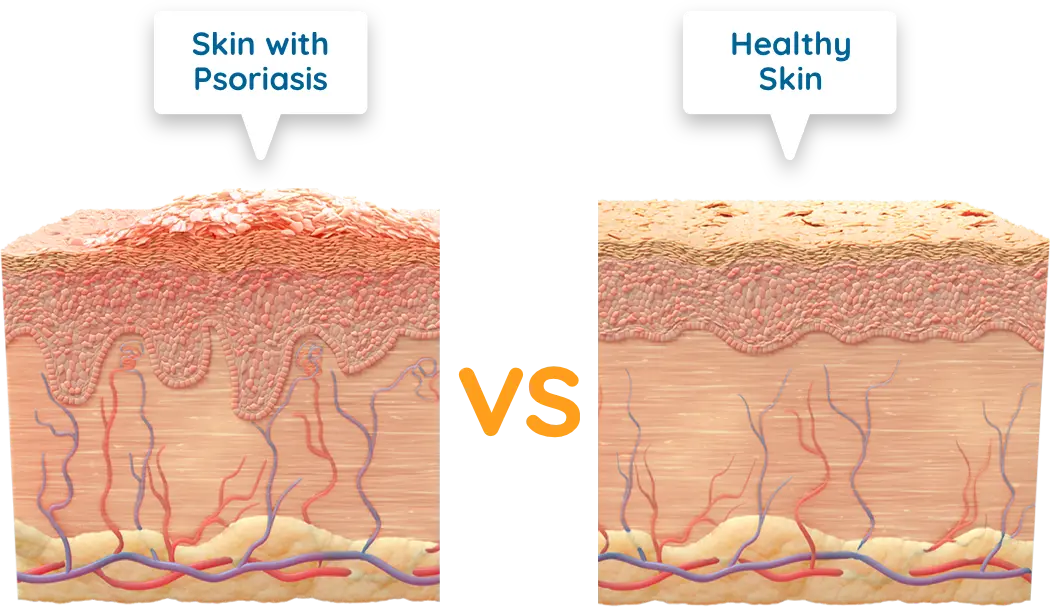

Who gets it and why?
Affecting over 8 million adults in the United States, psoriasis is a common skin condition that develops in both men and women at equal rates – often first appearing between the ages of 15 and 35. While scientists differ on its exact cause, genetics and the immune system both play major roles in the development of psoriasis.
What are the types of psoriasis?
Plaque psoriasis is the most common form of the disease; however, there are many other types that you should be aware of. DUOBRII Lotion is only approved to treat adults with plaque psoriasis. Talk to your doctor if you recognize any of the symptoms described below.
-
1
Plaque psoriasis
Plaque psoriasis is the most common and can appear as red bumpy patches that are covered with a silver-white buildup of dead skin cells. Plaque psoriasis:- Usually appears on scalp, knees, and lower back
- Can be itchy and painful and may crack and bleed
-
2
Scalp psoriasis
The name is somewhat misleading since scalp psoriasis can also appear on the forehead, neck and around the ears. The skin of the scalp is thicker. Often specific medications are used to treat it. -
3
Nail psoriasis
Nail psoriasis can cause a number of problems like pitting, discoloration and even the separation of the nail from the cuticle. Since nail injury may trigger or worsen psoriasis, it is important to keep your nails protected. -
4
Guttate psoriasis
Guttate [GUH-tate] psoriasis is a form of psoriasis that often starts in childhood or young adulthood, and can be triggered by a strep infection. This is the second most common type of psoriasis, after plaque psoriasis. -
5
Inverse psoriasis
Inverse psoriasis can happen in people with other types of psoriasis already on their body. It appears as bright red lesions on skin folds such as behind the knees, under the arms, or in the groin area. -
6
Pustular psoriasis
Pustular [PUHS-choo-lar] psoriasis appears anywhere on the body, but usually on the hands or feet, as white blisters (“pustules”) surrounded by red skin. These blisters are not infected or contagious. -
7
Erythrodermic psoriasis
Erythrodermic [eh-REETH-ro-der-mik] psoriasis is a very severe but rare type of psoriasis. This type tends to occur as redness all over the body and is very itchy and painful. It can sometimes even cause the skin to come off in sheets.
Visit Psoriasis.org
For more information on the different types of psoriasis.
Triggers
What are thought to be common causes of psoriasis flares?
Some experts believe psoriasis flares may be triggered by things from outside the body. What affects one patient may not affect another. Some outside triggers might include†:
- Stress
- Injury to skin
- Certain medications
- Bacterial infection
- Smoking tobacco
- Allergies
- Cold, dry weather or excess sunlight
- Certain foods like whole milk, gluten, citrus fruits, and fatty foods
- Drinking alcohol
How is it Diagnosed?
Evaluating the severity of psoriasis
Your doctor will assess the severity of your psoriasis. Depending on the percentage of your body surface area (BSA) that is affected by recurring scaly patches, psoriasis is categorized as mild, moderate, or severe. All of these can often be managed through proper treatment and medical supervision. To get an idea of how to measure BSA, your entire hand is equal to about 1% of your BSA.
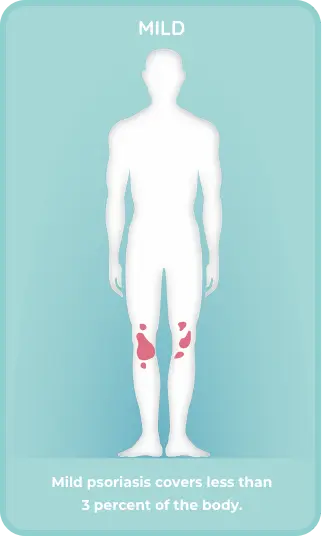
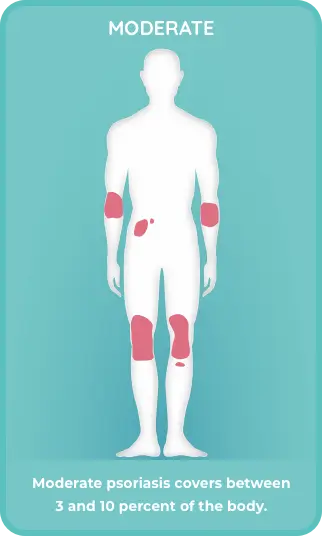
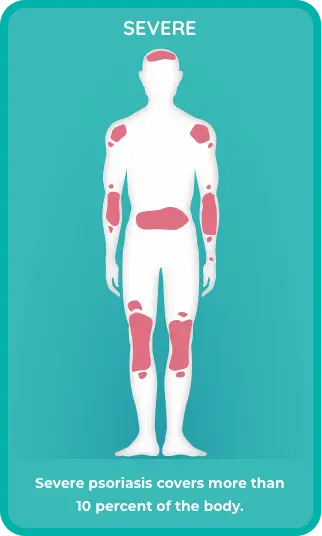
In addition to BSA, the severity of your plaque psoriasis is measured by how it impacts your day-to-day activities and feelings, so make sure to be completely honest with your doctor when getting assessed.
Treatment Options
What are the available treatment options?
Every patient’s journey is different, so finding the right psoriasis treatment for you may not happen immediately. Keep in mind that new solutions are continually being developed.
Your doctor may suggest one of the following treatment options to help get your psoriasis under control.
-
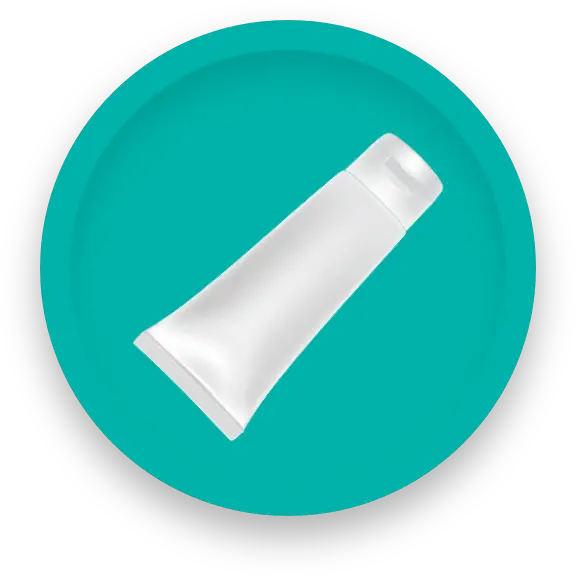
Topicals
Applied to the skin and usually the first treatment after initial diagnosis. Topical treatments can often be used in conjunction with other types of therapies. DUOBRII Lotion is a topical treatment. -

Orals
Systemic treatment option that is taken by mouth. -
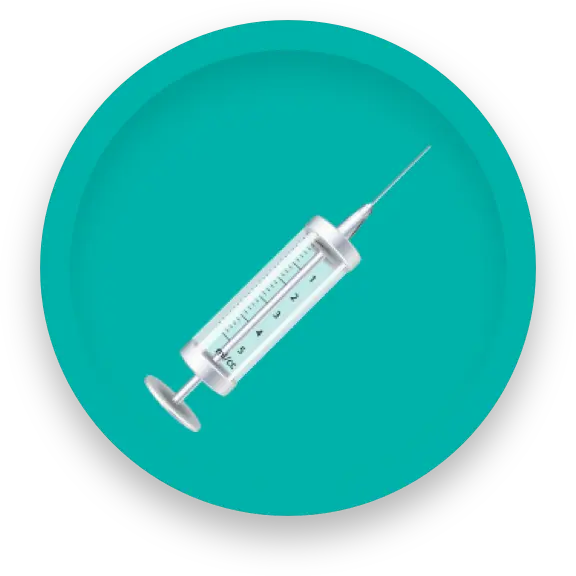
Biologics
Treatment given by injection or intravenous infusion. Typically prescribed for moderate-to-severe psoriasis when other treatments have failed. -

Phototherapy
Often referred to as “light therapy,” the skin is exposed to ultraviolet light on a regular basis and usually under medical supervision.
What are other health issues related to psoriasis?
If you have psoriasis, you may have a greater chance of having other health conditions as well. If you think you have symptoms of one of these conditions, talk to your doctor.
- Psoriatic (sore-EE-at-ic) arthritis, which can cause pain and swelling in your joints
- Cardiovascular disease
- Obesity
- Diabetes
- Depression
- High blood pressure
- Inflammatory bowel disorders, such as Crohn’s disease
- Certain cancers, such as lymphoma and nonmelanoma skin cancer
- Certain conditions such as osteoporosis (weak bones), kidney disease, liver disease, or inflammatory eye disease
